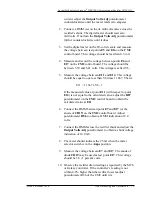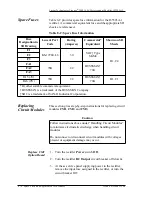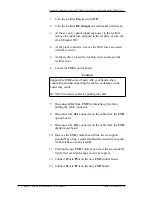
Lucent Technologies Lineage
®
2000 100A Ferroresonant Rectifier J85503A-1
Issue 6 October 1998
Spare Parts and Replacement Procedures 8 - 9
prevent them from contacting each other or any other
metal surface. Alternatively, the dc battery cables from the
rectifier can be disconnected at the plant charge battery
and charge ground buses.
•
Always make note of the lead connection points
(termination points) before unsoldering or disconnecting
them to insure trouble-free reinstallation. This includes
potentiometer leads, or the solderless, quick-disconnect type
connections used on circuit boards, relays, inductors,
transformers, and wire bundles.
•
Always disconnect quick-disconnect connections by pulling
straight apart with pliers to avoid bending or breaking the
tabs. Do not pull on wire. Always remember to save
hardware, thermal pads, and other items necessary for
reassembly in a convenient place.
•
Heat-generating semiconductor components, such as diodes
and thyristors (triacs), employ heat-conductive devices for
heat sinking such as thermal grease or thermal pads. The
thermal grease used should be KS-21343, L1, or an
equivalent. Diode thermal pads used in new rectifiers are
type DP125, comcode 405229154. Triacs Q1 and Q2 use
DP102, comcode 403208242.
•
DC capacitors can be examined to see if they have “blown”
(i.e., vented) due to voltage breakdown failure. A small hole
in the capacitor top, called a “blowhole,” is plugged in a
new or good capacitor, but is empty (blown out) in a failed
unit. Some capacitor blowholes cannot be viewed directly
until removed, or almost removed, from the rectifier. A
dental-type mirror aids in viewing these capacitors'
blowholes before disassembly. Lucent Technologies
recommends that all dc capacitors in a rectifier be replaced
whenever any one of them blows.
•
Procedures for testing and replacing individual rectifier
diodes are provided under “Rectifier Diode Test and/or
Replacement” later in this section. Also provided under
“Heat Shrink Removal” later in this section is the procedure
for taking apart bolted and insulated connections, such as
those used on large transformer leads.
















































